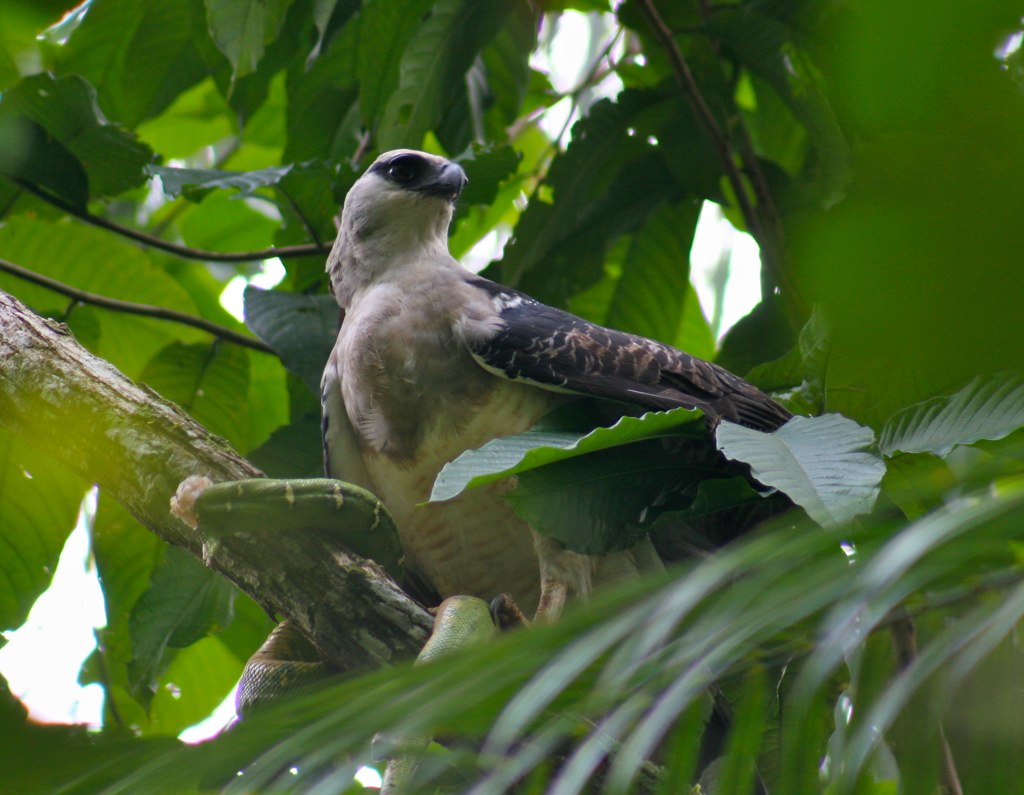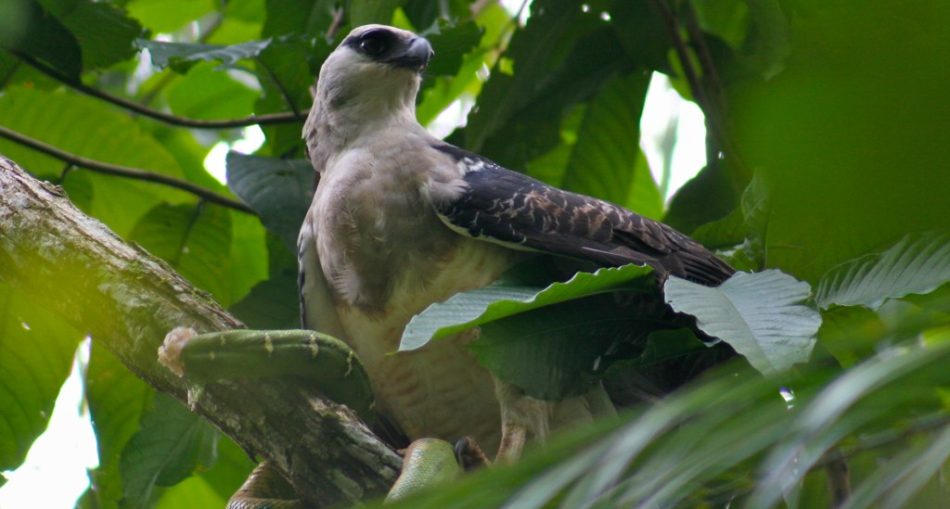A very large forest eagle, similar in appearance to the even more massive Harpy Eagle, is the Guiana Crested Eagle (Morphnus Guianensis). It is one of the beautiful large raptors to grace the lowland tropical and subtropical forests of Central and South America (Guyana).
Averaging around 84 cm in length, the Guiana Crested Eagle is built for life in the rainforests—it has broad, rounded wings and a very long tail to help it maneuver through the forest canopy, very keen eyesight to detect tiny movements among the foliage, and powerful legs and feet with sharp talons to catch large prey. The Crested Eagle has two color morphs, whereas the Harpy Eagle is monomorphic.
Scientific Classification Of The Crested Eagle
- Kingdom: Animalia
- Phylum: Chordata
- Class: Aves
- Order: Accipitriformes
- Family: Accipitridae
- Genus: Morphnus
- Species: M. guianensis
Did you know?
Their genus, Morphnus is a Greek word and translates to “a kind of eagle or vulture”. While the species-specific name, guianensis, derive from the location where its first specimen was collected, Guyana.
Where Does The Guiana Crested Eagle Live?
They are found in many countries including northern Guatemala, Belize, Honduras, Costa Rica, Nicaragua, north-eastern Venezuela, Guyana, French Guiana, Suriname, north Argentina, Panama, south-eastern Peru, eastern Ecuador, eastern Bolivia, Paraguay, and Colombia. They live primarily in the tropical and subtropical forests, often where observation is difficult.
Description Of The Guiana Crested Eagle
The crested eagle averages 71–89 cm (28–35 in) in length and weighs 1.75–3 kg (3.9–6.6 lbs). They have a fringe of feathers growing around or on the neck and a long, narrow black crest that is tipped with white. The crest is single (not divided as in the Harpy eagle). The sexes are alike except in size, with females being larger than males. They have broad, rounded wings and a very long tail that allows for manoeuvring around forest trees in search of prey. The black tail has bold, broad bars and is narrowly tipped in white. Guiana crested eagles occur in two forms — the less common, dark phase and the light phase. The dark phase is mainly black with heavily banded black and white underparts. In the pale phase, the crown is greyish black, with the head, neck and chest becoming pale grey. The upper back is black or brownish/black. The throat is white and the underparts are white, with pale reddish-brown bars. Females are slightly darker on the head and breast than the males.
Diet Of The Guiana Crested Eagle
The Guiana crested eagle has a varied diet comprised of various arboreal and terrestrial animals, both mammals and reptiles. Birds form a large portion of their diet including trumpeters, jays, cocks-of-the-rock, and guans. But these powerful avian predators also hunt small mammals such as opossums, kinkajous, squirrels, several other arboreal rodents and small monkeys like tamarins, spider monkeys, woolly monkeys or capuchin monkeys. Probably to avoid competing directly with the larger harpy eagle they feed generally on smaller prey.

Crested Eagle (pale morph) eating a green snake, an emerald tree boa, which was too heavy for the bird to carry so the photographer was able to get right underneath the tree. | By Alex Lee – originally posted to Flickr as Grey Hawk with Boa Constrictor, CC BY 2.0, https://commons.wikimedia.org/w/index.php?curid=7824867
Behaviour Of The Guiana Crested Eagle
They are normally found alone or in pairs, perched for long periods of time on branches in the highest treetops. They may fly slowly above the canopy, scoping out prey as they move about, or they may still-hunt from their perch.
Communication Of The Guiana Crested Eagle
Females are said to call from the nest and males call as they approach the nest to bring food.
Reproduction Of The Guiana Crested Eagle
The breeding season starts in the late dry season and beginning of the wet season around March or April. They often build a large nest with a shallow cup using bulky sticks. Typically located in the main fork of a large tree, the nest is concealed in greenery near the canopy. During the incubation period, males are the sole provider for both parents getting the food that the incubating female needs. The clutch size is usually 2 eggs, but normally only one hatchling is reared by the female. When the eggs hatch females will stay near, attending and brooding the chicks. She will start delivering food to them about a month after hatching. Only females feed the young eagles and clean the nest.
Conservation Status And Major Threats Of The Guiana Crested Eagle
Even though the crested eagle has a fairly large range, the species is currently classified as Near Threatened by the IUCN. These eagles have consistently appeared to occur at lower densities than other species, their estimated breeding population in the wild is only around 1,000 to 10,000 mature individuals. As a consequence of their noticeably high dependence on sprawling forests, the species is definitely very affected by habitat destruction. In former breeding areas where extensive forest areas have been cleared crested eagles no longer occur.
The Guiana Crested Eagle
Built for life in the rainforests, this beautiful bird can be found in many countries such as Guyana, Brazil, Suriname, French Guiana, just to name a few. These eagles are carnivores and they usually feed on mammals and reptiles. The Guiana crested eagle is truly a sight!
Article References:
- https://wildlife-facts.weebly.com/crested-eagle.html
- https://www.beautyofbirds.com/crestedeagles.html
- https://www.canopytower.com/crested-eagle/
- https://dwazoo.com/animal/guiana-crested-eagle
- https://ebird.org/species/creeag1
- Main Image: Crested Eagle (pale morph) eating a green snake, an emerald tree boa, which was too heavy for the bird to carry so the photographer was able to get right underneath the tree. | By Alex Lee – originally posted to Flickr as Grey Hawk with Boa Constrictor, CC BY 2.0, https://commons.wikimedia.org/w/index.php?curid=7824867







